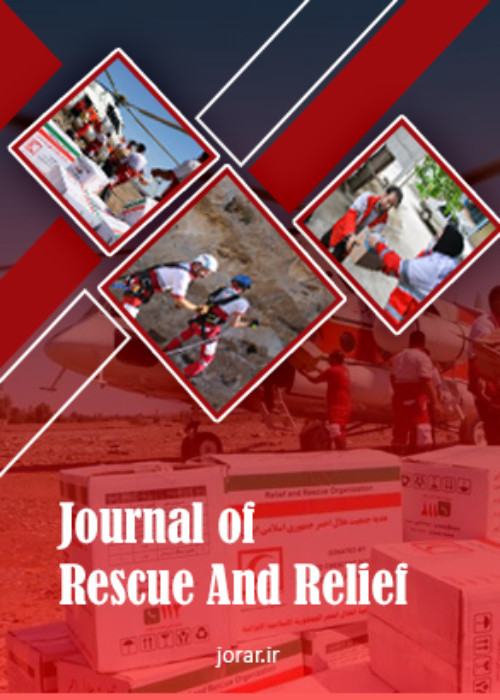Predicting the time required for Eslamshahr Township emergency personnel to attend at the scene of a disaster
Author(s):
Abstract:
Background
The first emergency medical services system was organized by Baron Dominique Jean Larrey-Napoleon's surgeon during the battle of France with Germany and Austria. After collapsing the roof of Merhabad airport and killing a number of people, Iranian government decisided to launch the pre-hospital emergency medical system in 1976. Eslamshahr is the main highway with approximatly 500 thousand people. This township has only one hospital with 130 beds and 8 emergency centres; it has many traffic accidents in addition to common problems. The main goals of this study are to evaluate the performance of prehospital emergency and to determine the factors causing this loss because the time to reach patients and the injured side is an important factor. However, this time should be less than 8 minutes in the standard protocol.Methods
In this cross-sectional research, all completed missions by Eslamshahr emergency were studied in 2007- 2008. The arrival time on patients and the injured side considered as an only dependent variable by cluster sampling method. Then, the response variable regression model and other variables is discussed (α=5%).Results
In this study, a total of 4267 data of users from six emergency services bases were selected and studied randomly. This number includes 3,210 urban missions and the rest were road missions. About 35/1% of people in need of services were women and the rest were men. The median age was 40/51 years for those in need (SD=19/815). Also the average time to reach the scene of the emergency has been 5':36" (SD=4':42"). Meanwhile, the peak time of mission was 15':43". Since the arrival time at the scene were linear, the chart is based on a linear regression model. Given the significant level of 5% or even higher, the variables such as time of starting, summer and fall seasons vary significantly associated with time to reach the scene.Conclusion
The results of comparison between the models obtained in the urban and the road bases have shown that the variable of working days had no affect on the arrival time to the scene in any models (p=5%). Also, the variable of fall season had a significent effect on the arrival time to the scene in both models. Although most missions have been conducted in summer.Keywords:
Language:
Persian
Published:
Scientific Journal of Rescue Relief, Volume:4 Issue: 3, 2012
Page:
67
magiran.com/p1080090
دانلود و مطالعه متن این مقاله با یکی از روشهای زیر امکان پذیر است:
اشتراک شخصی
با عضویت و پرداخت آنلاین حق اشتراک یکساله به مبلغ 1,390,000ريال میتوانید 70 عنوان مطلب دانلود کنید!
اشتراک سازمانی
به کتابخانه دانشگاه یا محل کار خود پیشنهاد کنید تا اشتراک سازمانی این پایگاه را برای دسترسی نامحدود همه کاربران به متن مطالب تهیه نمایند!
توجه!
- حق عضویت دریافتی صرف حمایت از نشریات عضو و نگهداری، تکمیل و توسعه مگیران میشود.
- پرداخت حق اشتراک و دانلود مقالات اجازه بازنشر آن در سایر رسانههای چاپی و دیجیتال را به کاربر نمیدهد.
In order to view content subscription is required
Personal subscription
Subscribe magiran.com for 70 € euros via PayPal and download 70 articles during a year.
Organization subscription
Please contact us to subscribe your university or library for unlimited access!



